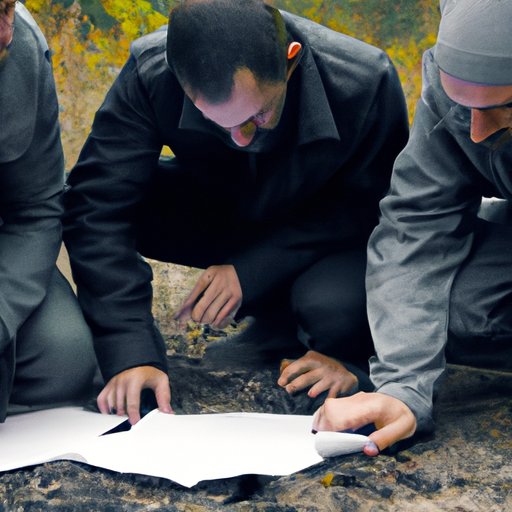
Introduction
Smuggling is a serious crime that affects individuals and communities on a global scale. Not only does smuggled goods often pose a threat to public health and safety, but it also undermines legitimate businesses and government institutions. In this article, we will provide an overview of the tactics, technologies, and cooperation required to catch smugglers and prevent further harm.
10 Proven Tactics for Catching Smugglers: Expert Advice from Customs Officials
Customs officials around the world have developed a set of tactics that have been proven effective in catching smugglers. These tactics include:
- Profiling
- X-ray screening
- Sniffer dogs
- Random inspections
- Intelligence gathering
- Undercover operations
- Search and seizure
- Surveillance
- Fines and penalties
- Cooperation with other agencies
Each of these tactics has its own set of advantages and disadvantages and may be more or less effective depending on the specific circumstances. For example, profiling can be an effective way to identify potential smugglers, but it can also lead to issues of racial or ethnic profiling. Search and seizure can yield significant evidence, but may also run afoul of civil liberties concerns.
How to Plan a Successful Sting Operation to Catch Smugglers
Sting operations can be an effective way to catch smugglers in action. These operations often involve undercover agents posing as smugglers or buyers to gather intelligence and identify key players in the smuggling operation. The following are key steps in planning a successful sting operation:
- Gather intelligence
- Identify key players
- Develop a plan
- Execute the operation
- Secure evidence
Effective sting operations require close coordination between law enforcement and other agencies, as well as careful attention to detail and the use of sophisticated surveillance equipment and techniques.
The Role of Technology in Smuggling Interceptions: Key Tools and Techniques
Technology plays a key role in identifying and intercepting smuggled goods. Some of the key tools and techniques used in this effort include:
- X-ray machines
- Drone surveillance
- Body scanners
- Sonar
- Heat-seeking cameras
These technologies can help officials detect hidden compartments, identify suspicious packages, and track the movement of smugglers and goods. In some cases, technology can be used to intercept smuggling efforts before they even begin.
Inside the Mind of a Smuggler: Understanding Their Tactics and Behaviours
Smugglers rely on a range of tactics and behaviours to transport goods across borders undetected. Understanding these methods can help law enforcement officials identify and intercept smuggling operations. Some common tactics and behaviours include:
- Using multiple routes and modes of transport
- Using false paperwork and documentation
- Working with corrupt officials and customs agents
- Creating hidden compartments in vehicles and containers
- Mixing smuggled goods with legitimate cargo
By staying abreast of these trends and tactics, customs officials can work to stay one step ahead of smugglers.
The Impact of Cross-Border Cooperation in Catching Smugglers: Case Studies and Examples
The global nature of smuggling means that cooperation between countries is crucial in preventing its spread. Some examples of successful cross-border cooperation in catching smugglers include:
- Joint task forces involving multiple agencies from different countries
- Exchange of information and intelligence between countries
- Training programs to help officials identify and intercept smuggled goods
These efforts have been successful in intercepting large quantities of smuggled goods, identifying key players in the smuggling operation, and bringing smugglers to justice.
The Legal Aspects of Smuggling Busts: Navigating Challenges and Obstacles
Smuggling busts can present a range of legal challenges, including jurisdictional issues, admissibility of evidence, and the need to navigate complex international legal frameworks. Law enforcement officials must work closely with legal experts to ensure that prosecutions are successful and that smugglers are held accountable for their actions.
From Air, Land and Sea: The Best Ways to Monitor and Detect Illegal Smuggling Activities
Smuggling takes place across a range of environments and modes of transport, from air to land to sea. Effective monitoring and detection strategies must be in place to identify and intercept smuggling efforts. This can include:
- Border patrols
- Maritime patrols
- Air surveillance
- Community involvement and reporting
By staying vigilant and working together, customs officials and other law enforcement agencies can help to prevent smuggling and the harm it causes to individuals and communities.
Conclusion
Catching smugglers requires a multi-faceted approach that includes tactics, technologies, and cooperation between countries and agencies. By profiling potential smugglers, using sophisticated technology, and understanding the tactics and behaviours of smugglers, law enforcement officials can identify and intercept smuggling operations before they cause harm. It is crucial that we continue to work together to combat smuggling and preserve the safety and security of individuals and communities worldwide.





